

The Visual Resources Collection will be offering an introductory workshop on The Basics of Photographic Composition on Sunday, April 26, 2015 from 2–3pm in UTSOA Visual Resources Collection, Sutton Hall 3.128.
This single, one-hour session will focus on familiarizing students with image composition best practices. The workshop will cover the basics of selective focus and depth of field and how they relate to aperture with a concentration on architecture, urban landscape, and model photography.

On Friday, April 24, the Center for American Architecture and Design hosted Clay Odom as part of the Friday Lunch Forum Series. He presented “Productions.”
FRIDAY LUNCH FORUM
Roughly every other Friday during the fall and spring semesters, the Center hosts the Friday Lunch Forum Series. The aim of the series is for faculty, staff, and students to meet in an informal atmosphere to debate topics and to share ideas about history, practice, theory, and new directions for architecture. Recordings of each forum will be posted as they become available.

Barron Peper and Christina Hunter [B.Arch. 2015 candidates] are part of an urban studio this spring led by Juan Miró that is exploring the potential behind The Brackenridge Tract, a 368 acre plot of pristine land along Lady Bird Lake donated to UT "for the betterment of the University." The presentation will highlight findings from the studio's visit to Spain where they investigated compact city models and a variety of housing typologies alien to the United States. Join us for a discussion of how developments in Austin can blend high density with relationship to nature.
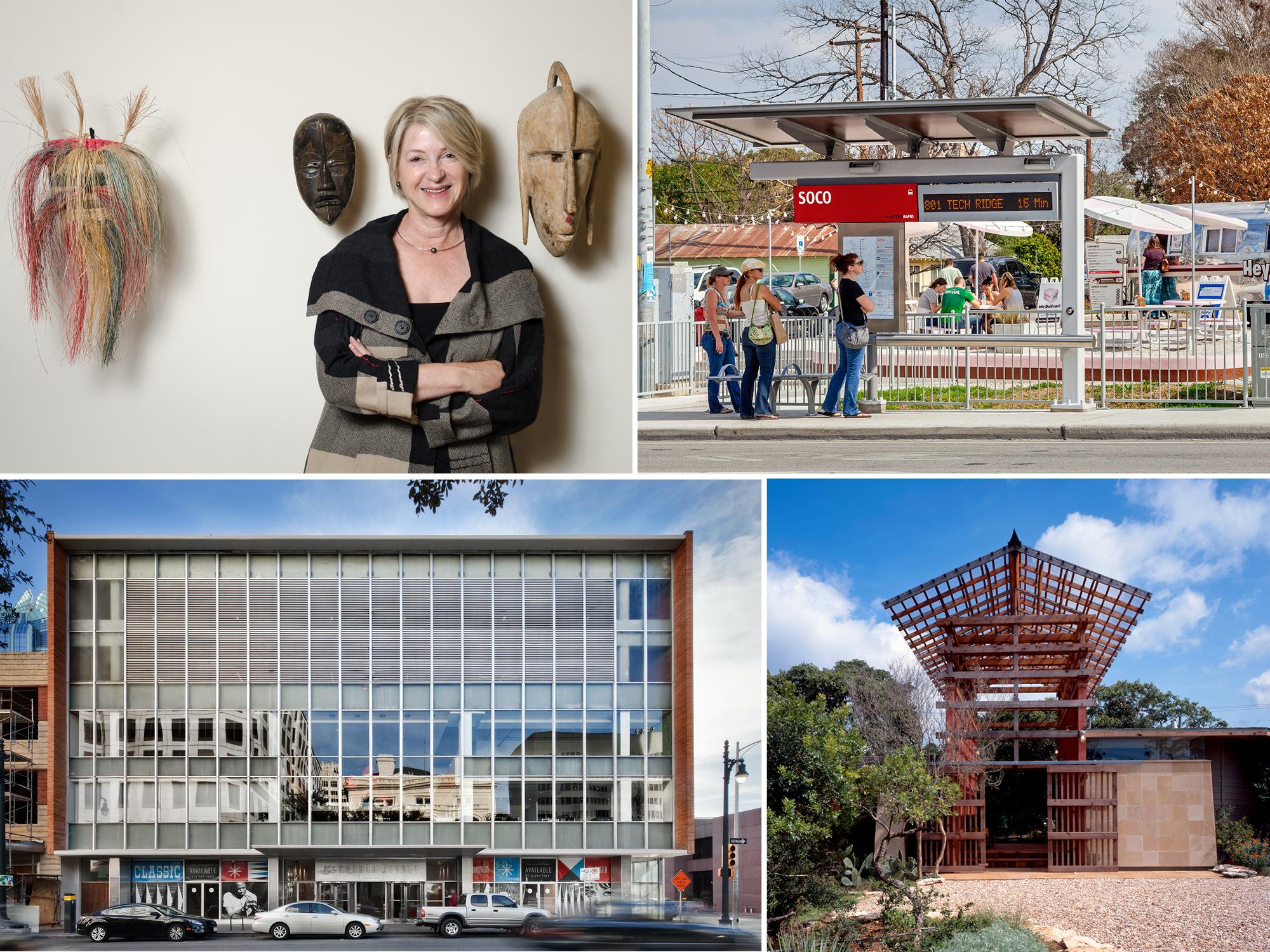
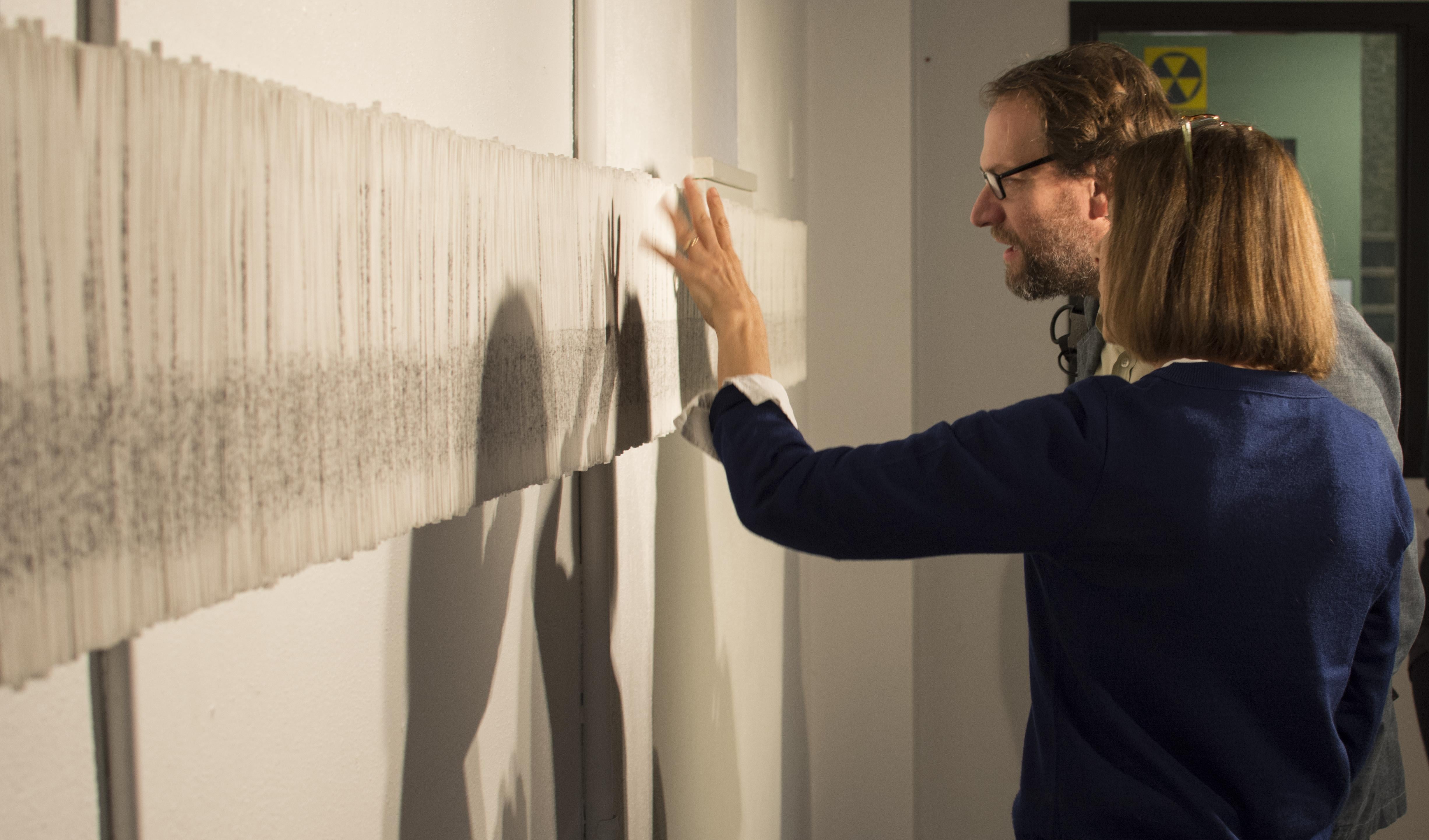
Pyrolysis is produced by Olive & Otis, a design collective formed by Senior Lecturer Joyce Rosner and designer Michelle Bedrosian.
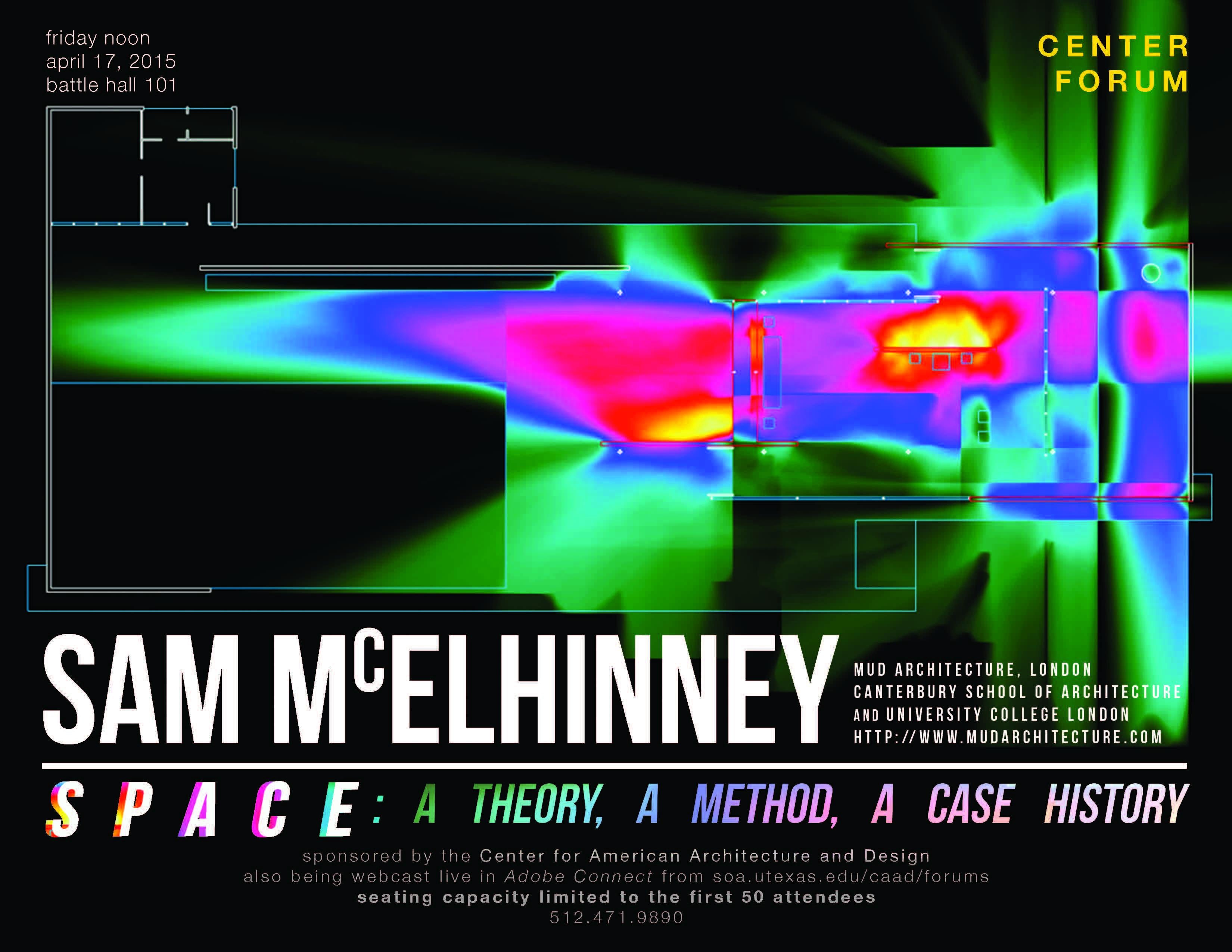
On Friday, April 17, the Center for American Architecture and Design hosted Sam McElhinney as part of the Friday Lunch Forum Series. He presented "Space: A Theory, A Method, A Case History."
FRIDAY LUNCH FORUM
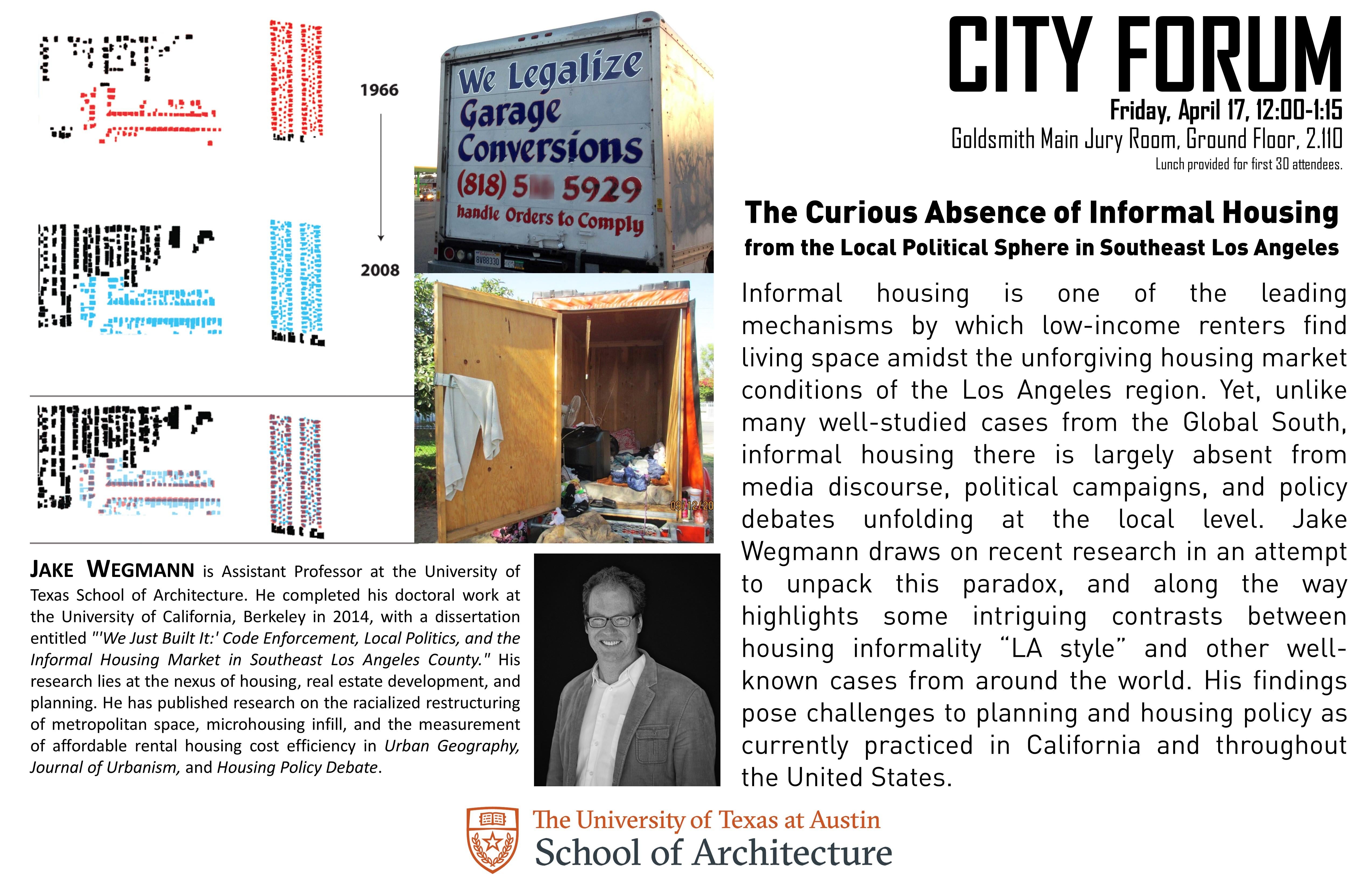
The Curious Absence of Informal Housing from the Local Political Sphere in Southeast Los Angeles
Presenter: Dr. Jake Wegmann
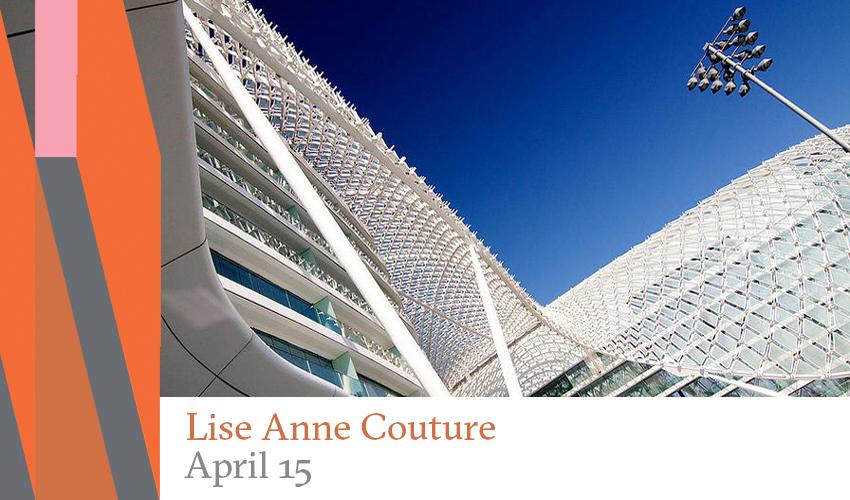
FastForward Rewind Play
Lise Anne Couture is a principal of Asymptote Architecture, the highly acclaimed New York-based practice that she co-founded with Hani Rashid in 1989. Through its award winning design projects and buildings, Asymptote has gained an international reputation for being at the forefront of design and technological innovation.

